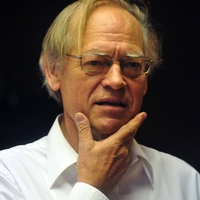Papers by Małgorzata Mazurek

Spring mires belong to a rare group of geoecosystems that are supplied with groundwater (soligeno... more Spring mires belong to a rare group of geoecosystems that are supplied with groundwater (soligenous fens) and are characterised by a specific type of lithological development, i.e. peats alternating with calcerous tufas. Whereas, in the context of the great usefulness of tufa and peat series from such objects for palaeoclimatic and palaeohydrological reconstructions, which have been emphasized in the recent years, definition of the geological and hydrological conditions of their functioning seems to be the key to further palaeoenvironmental interpretations. Spring mires classified among the low soligenic mires cover small areas; their total presence in Poland is assessed at less than 1% of the whole mire area. The aim of the research is characteristic of the geological and hydrological conditions for the presence of spring mires in the Parsęta River basin (Northern Poland). From 53 spring mires two objects were chosen for detailed study. Within the two sites there were analysed: sup...

Bogucki Wydawnictwo Naukowe eBooks, Dec 8, 2021
Rzeźba terenu jest ważnym zasobem przyrodniczym, który podlega zmianom w czasie i w przestrzeni. ... more Rzeźba terenu jest ważnym zasobem przyrodniczym, który podlega zmianom w czasie i w przestrzeni. Zmiany te dokonują się zarówno pod wpływem procesów naturalnych, jak i antropogenicznych, obejmując wszystkie sfery środowiska geograficznego, wśród których morfosfera jest miejscem ich działania, a także relacji z innymi sferami, w tym z antroposferą. W oparciu o prowadzone szczegółowe obserwacje terenowe można stwierdzić, że przyczyną zmian rzeźby jest klimat i różne przejawy działalności człowieka. Zwiększający się wpływ człowieka na procesy morfogenetyczne i ich efekty zaznacza się w skali lokalnej, regionalnej i globalnej. Z metodycznego punktu widzenia, sprawą pierwszorzędnej wagi jest oddzielenie w ocenie oddziaływania i efektów procesów naturalnych i antropogenicznych, a także rozpoznanie mechanizmów ich funkcjonowania. Dyskusja i oceny w tym zakresie są odmienne zarówno ze strony nauki, jak i praktyki, co doprowadza do swoistych konfliktów społecznych. Temperatura powietrza w XX w. podniosła się o 0,6 ± 0,2°C, przewidywany jest dalszy jej wzrost w XXI w. w granicach 1,4-5,8°C 1. Scenariusz taki doprowadzi do istotnych zmian w obiegu energii i przepływie materii, co będzie mieć zasadniczy wpływ na zachodzące przemiany krajobrazowe we wszystkich strefach morfoklimatycznych. Monitorowane zjawisko-wzrost częstotliwości procesów o charakterze katastrofalnym, takich jak: huragany, powodzie, susze itd.-jest niewątpliwie stymulowane procesami naturalnymi i antropogenicznymi. Oceny jakościowej i ilościowej zmian poszczególnych sfer środowiska geograficznego dokonuje się w przyjętych skalach czasowych. Reakcją społeczności nauk o Ziemi na zachodzące zmiany jest propozycja dotycząca geochronologii Ziemi. Efektem prowadzonej dyskusji, m.in. w ramach Międzynarodowego Programu Badań Geosfery-Biosfery Zmiany Globalne (International Geosphere Biosphere Programme Global Change), było przedstawienie propozycji nowej jednostki w historii Ziemi-antropocenu, co ma podkreślać rolę człowieka w zmianach geosfery.
EGU General Assembly Conference Abstracts, Apr 1, 2018
Przegląd Geograficzny, 2017

Bhutan, being a Himalayan mountain country, extends ca. 305 km from west to east and 145 km from ... more Bhutan, being a Himalayan mountain country, extends ca. 305 km from west to east and 145 km from south to north, covering an area of 47,000 km 2. Bhutanese Himalaya mountains are divided into three latitudinal belts from south to north: the sub-Himalayas or Himalayan foothills (up to 1,500 m in altitude), the inner Himalayas or middle ranges with flat valleys (from 1,500 to 4,500 m), and the Great Himalayas of high mountains (about 4 500 m). The Black Mountain Range, stretching longitudinally, divides this country into the eastern and western parts. The belt system of landforms is closely related to the geological structure. In the north, metamorphic and crystalline rocks (mainly gneisses and granites) dominate, while in the south there are sedimentary rocks associated with the molasse-like sediments in the Siwalik range. The distribution of precipitation from approx. 500 mm in the north to 5000 mm in the south of the country relates to this geological and morphological belt system. The main rivers flow longitudinally and have perpendicular tributaries. The digital elevation model of Bhutan was analysed geomorphometrically and, on this basis, places with high potential mechanical denudation were identified. The most evident manifestation of this denudation are numerous landslides occurring on the valley slopes. These landslides, especially in the monsoons period, deliver enormous amounts of landslide material to the valley bottoms, and most often directly to the river channels. The landslide material in the form of fluvial material is further transported along the rivers and deposited in the foreland of the Himalayas. After the summer monsoon period, water samples were collected in selected rivers. The collected water samples were subjected to hydrochemical analyzes. The studied river waters in the middle part of the country are characterized by low mineralization. The obtained results allow for a preliminary characterization of the spatial diversification of the denudation potential of Bhutan's river waters. Referring to the physiographic division of Bhutan, it can be confirmed that the middle zones, meridional ridges and valleys of this country are characterized by low chemical denudation and high mechanical denudation, while the southern tips of the country Front Hills and Piedmont are dominated by accumulation processes due to a significant reduction in river gradient.
EGU General Assembly Conference Abstracts, Apr 1, 2019

<p>The poster will present the role of contemporary morphogenetic processes in shap... more <p>The poster will present the role of contemporary morphogenetic processes in shaping the morphological landscape of the city of Poznań (530 464 inhabitants). The study is based on geocomputation performed on a digital elevation model, analysis of geomorphological evolution of the city area and analysis of land cover and land use. Particular attention was paid to above-average and extreme processes. The discussed morphogenetic processes included the analysis of floods on the Warta River flowing through the city, flash floods generated in the city streets, mass movements occurring mainly on the slopes of the Warta River valley and on the slopes of moraine hills, and wind erosion occurring in vast areas devoid of vegetation. Most of these processes are related to the progressive climatic changes and sealing of the ground by concreting and asphalting large patches of the city. The analysed processes are visualised on a geomorphological map and a land cover and land use map. Contemporary morphogenetic processes observed in Poznań include: (a) on morainic hills/uplands: mass movements, wind erosion and flash floods; (b) on outwash plains: mass movements and flash floods; (c) on fluvial landforms: mass movements and river floods; (d) within plains of different origin: flash floods. Increasing urbanisation of the city, mainly through the increase in impervious surfaces, increases the risk of flash floods, which have replaced river floods in the list of risks to urban infrastructure.</p>
Journal of Applied Genetics, 2012
The paper discusses the spatial variability of the physical and chemical properties of river wate... more The paper discusses the spatial variability of the physical and chemical properties of river water in the upper Parseta catchment (West Pomerania, Poland) during rising spring flows. Making use of data generated by 6 hydrochemical surveys, the studied waters were classified based on so-called fuzzy clustering methodology and attempts were made to interpret their spatial distribution. The obtained results show that during spring rising flows meteorological and hydrological conditions present in the period prior to sampling have a major impact on the water chemistry of the upper Parseta catchment. These prior conditions significantly weaken the spatial variability of lithological and hydrogeological characteristics which is clearly perceptible in the case of low outflows.
Detailed research studies on the physical and chemical properties of waters were conducted within... more Detailed research studies on the physical and chemical properties of waters were conducted within the Żarnowo channel head in West Pomerania. Samples were collected at regular measuring sites, which represent groundwater of the footslope zone, interstitial waters and rivulets. In order to identify the origin of ionic components in channel headwaters, the collected hydrochemical data were subjected to factor analysis using the principal component method. The main factors shaping the chemistry of waters : geogenic, anthropogenic, biogenic, and redox were identified. The study was designed to identify the determinants of the water chemistry of 1st-order streams.

Journal of Maps, 2021
ABSTRACT This paper presents the results of geohazards mapping and evaluation their role in the m... more ABSTRACT This paper presents the results of geohazards mapping and evaluation their role in the modifying of the urban landscape in Poznań, Poland. Information on geohazards specific to an urban lowland area (river floods, flash floods, mass movement, wind erosion) because of increasing climate change was compiled into a geomorphological map. The most spatially widespread geohazards in Poznań include: (a) on moraine hills/uplands: mass movement, wind erosion, and flash floods (4.9% of the city area); (b) on outwash plains: mass movement and flash floods (8.6% of the city area); (c) on fluvial landforms: mass movement and river floods (9.8% of the city area); (d) within plains of various origin: flash floods (7.6% of the city area). Mass movement affecting short but numerous (and locally steep) slopes, and flash floods are the most widespread geohazards (16 and 14%, of Poznań’s area, respectively). Extensive urbanisation especially the expansion of impervious surfaces increases the high risk of flash floods.

Urban Geomorphology, 2018
Abstract The aim of this chapter is to assess the geological and morphological characteristics of... more Abstract The aim of this chapter is to assess the geological and morphological characteristics of areas created by chronologically and spatially overlapping geomorphic and morphogenetic processes, mainly during the last glaciation, and—against such background— to present the major landform transformation of the city of Poznan from the Middle Ages to the present day. The characteristic feature of Poznan is its location on the river, that is the Warta River. The chapter presents Poznan’s geological, sedimentological, and geomorphological setting, with the final shape of landforms in Poznan being a product of the last Scandinavian glaciation, including features, such as a moraine plateau, outwash plains, and crevasse forms. The most important and largest form of the meridional course, however, is the Warta River and how it divides Poznan between western and eastern parts, with morphological changes occurring in different places of the city throughout the centuries. The largest areas among the anthropogenic forms occupy the leveled plains of residential areas. These features are expounded upon by proposing locations for various geosites.










Uploads
Papers by Małgorzata Mazurek